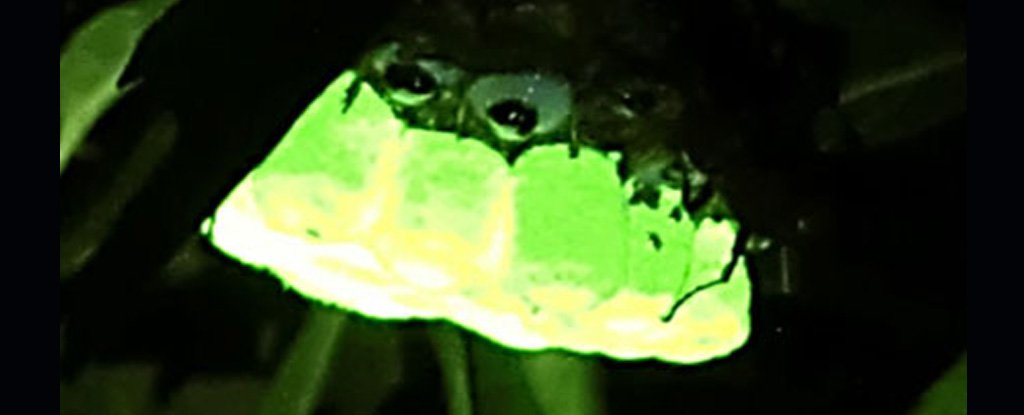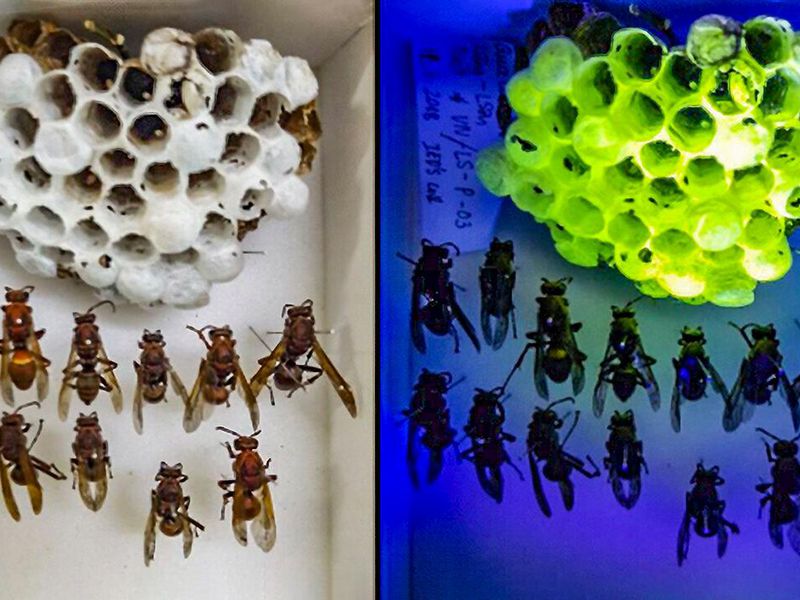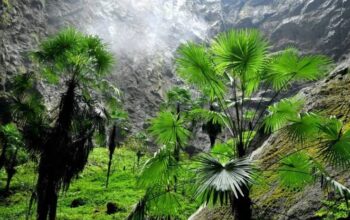Silk fibers give the nest its radiant a neon hue–
“Scientist Bernd Schöllhorn was exploring a forest in northern Vietnam when he spotted through the foliage a radiant green orb.”
The following written content by Corryn Wetzel
Scientist Bernd Schöllhorn was exploring a forest in northern Vietnam when he spotted through the foliage a radiant green orb. Schöllhorn, who was looking for new fluorescent insects using an ultraviolet LED light, first thought it was another scientist with a flashlight. But when he investigated further, Schöllhorn saw the open comb of a paper wasp nest glowing back at him.

“I thought it was somebody else,” Schöllhorn tells Katherine J. Wu for the Atlantic. “It was just incredible.”
In daylight, paper wasp nests are an unassuming white or yellow color, but when hit with ultraviolet light, they take on a new life. The glow from the paper wasp nest was particularly intense, with sections of the exposed paper comb visible from up to 60 feet away, according to the study published in the Journal of Royal Society Interface earlier this week. The wasps themselves don’t radiate light, nor did the papery upper parts of the nest—the glow comes from silk fibers that cap the hexagonal cells.
“To our knowledge, this phenomenon has not been observed in the past, neither by scientific researchers nor by any photographers,’ Schöllhorn tells Nicoletta Lanese for Live Science.
The team of researchers tested the nests of six different species of the paper wasp found in Vietnam, France and French Guiana under UV light 360 and 400 nanometers in wavelength. Every nest glowed under the light: the nests from Vietnam shone green, while the others emitted a bluish tone.
“Finding this in so many species, and across three different continents, is remarkable,” says Swanne Gordon, an evolutionary biologist at Washington University in St. Louis, who wasn’t involved in the study, to the Atlantic.
Scientists have found similar fluorescence in some species of salamanders and frogs, corals, platypuses, wombats and flying squirrels. Biofluorescent organisms absorb light and reemit it at a new wavelength, which gives them their glow. According to Science Alert’s Michelle Starr, humans can only see the phemonemen when the organism is illuminated by an external light source, like Schöllhorn’s UV torch.
Researchers suspect the silk’s green glow is visible to the wasps, but it’s not yet clear what purpose the illuminated home provides. The glow might simply be a coincidence. Read more from Smithsonian.






